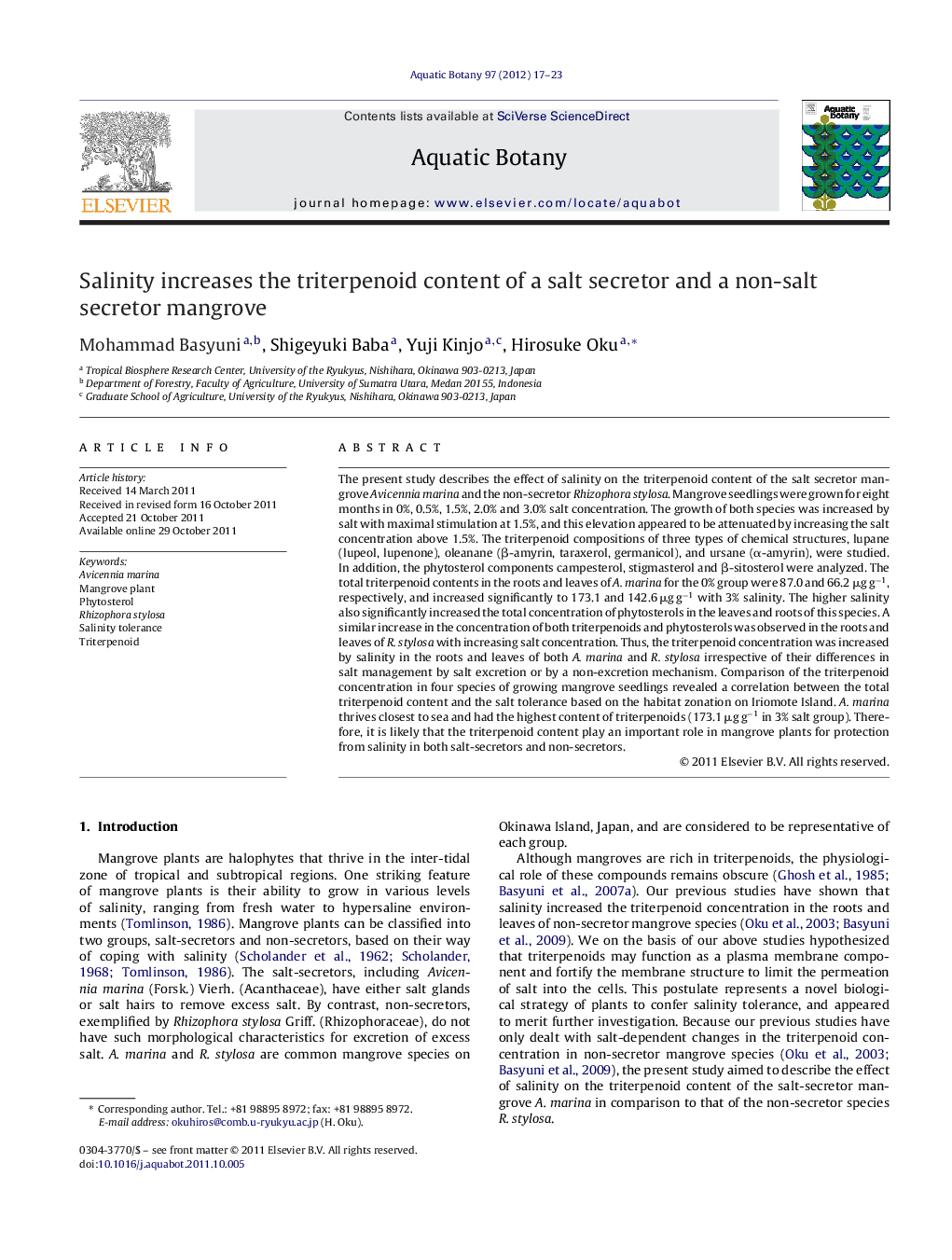| Article ID | Journal | Published Year | Pages | File Type |
|---|---|---|---|---|
| 4528057 | Aquatic Botany | 2012 | 7 Pages |
The present study describes the effect of salinity on the triterpenoid content of the salt secretor mangrove Avicennia marina and the non-secretor Rhizophora stylosa. Mangrove seedlings were grown for eight months in 0%, 0.5%, 1.5%, 2.0% and 3.0% salt concentration. The growth of both species was increased by salt with maximal stimulation at 1.5%, and this elevation appeared to be attenuated by increasing the salt concentration above 1.5%. The triterpenoid compositions of three types of chemical structures, lupane (lupeol, lupenone), oleanane (β-amyrin, taraxerol, germanicol), and ursane (α-amyrin), were studied. In addition, the phytosterol components campesterol, stigmasterol and β-sitosterol were analyzed. The total triterpenoid contents in the roots and leaves of A. marina for the 0% group were 87.0 and 66.2 μg g−1, respectively, and increased significantly to 173.1 and 142.6 μg g−1 with 3% salinity. The higher salinity also significantly increased the total concentration of phytosterols in the leaves and roots of this species. A similar increase in the concentration of both triterpenoids and phytosterols was observed in the roots and leaves of R. stylosa with increasing salt concentration. Thus, the triterpenoid concentration was increased by salinity in the roots and leaves of both A. marina and R. stylosa irrespective of their differences in salt management by salt excretion or by a non-excretion mechanism. Comparison of the triterpenoid concentration in four species of growing mangrove seedlings revealed a correlation between the total triterpenoid content and the salt tolerance based on the habitat zonation on Iriomote Island. A. marina thrives closest to sea and had the highest content of triterpenoids (173.1 μg g−1 in 3% salt group). Therefore, it is likely that the triterpenoid content play an important role in mangrove plants for protection from salinity in both salt-secretors and non-secretors.
► Salinity increased triterpenoid content in the roots and leaves of both Avicennia marina and Rhizophora stylosa. ► An increase in the triterpenoid content was also supported by the increased mRNA level of triterpenoid synthase gene under salinity. ► The basal triterpenoid concentration of mangrove species including A. marina and R. stylosa is well correlated with their salt tolerance based on the habitat zonation.
